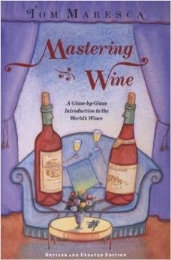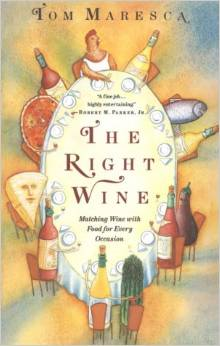I hate to sound cynical, but I’m willing to bet that the vast majority of people who happily consume Pinot grigio have no idea what that wine tastes like at its best, and that it should always taste that way. They’re mostly drinking, probably at inflated prices, inexpensive Pinot grigio that is being almost mass-produced for its apparently indiscriminate and insatiable market.
Old timers will remember that we’ve seen this before, with insane fads for light Italian white wines that looked as if they would never end – until they did: Soave, once upon a time, and Verdicchio, both of whose quality producers have had to labor mightily to restore their reputations once the bubble burst.
I’m hoping Pinot grigio can avoid a similar fate. The quiet, steady, rock-solid work that many producers are doing throughout the whole arc of Pinot grigio’s cultivation zone ought – ought – to be sufficient to sustain the wine’s reputation when the thirst for watery whites moves on to another variety.
A good example of what I mean by the best of Pinot grigio can be found in the bottles from Albino Armani. This is a firm that – despite its trendy, very fashionable and “now”-sounding name – is not a new start-up but a family firm that has been making wine since 1607. The name is their own, and the present head of the winery, Albino Armani, has been visiting the US and presenting his wines wherever Covid restrictions make that possible. He and I did not meet this time, though we did many years ago when I visited the firm’s Veneto estate and headquarters.
This time, my Wine Media Guild colleague and US representative of several Italian wine organizations, Susannah Gold, provided me with some samples to taste. They form the basis of what follows, though my long-standing esteem for Armani wines flows from that long-ago visit, when I was bowled over by the wonderful typicity that Armani achieved with every variety it grew.
This time I was tasting three of Armani’s basic Pinot grigios: one from Valdadige, one from the Venezie, and one from the Grave del Friuli.
.
That trio was particularly interesting to me because it represented in miniature the west-to-east sequence of the primary zones for Pinot grigio production in Italy. Armani maintains wineries in each, so I expected each of my bottles to accurately reflect the characters of Pinot grigio’s different growing areas.
.
All three wines were of the 2020 vintage, and all three showed nearly identical pale straw color, as you would expect of Pinot grigio. I tasted west to east, so my first bottle was from Valdadige, which proved to be a fine place to begin.
.
.
It initially had a lovely stony-and-stone fruit nose, followed by earth and spice. Diane picked up a little lemon among the stones. In the mouth, the wine gave similar stone fruit, earth, and spice flavors. Diane tasted pear as well. Over all, it was smooth feeling, with restrained acidity and a touch of elegance. (How often can you say that of a Pinot grigio?) I particularly liked its long, dried-peach finish.
.
My second bottle was Pinot grigio delle Venezie.
.
Its aroma was very similar to the Valdadige wine, but a bit stronger and a touch earthier, as were the flavors it gave in the mouth. I tasted dried apricots on the palate and some peach in the finish, but overall I found it subdued: not fully open, in fact, as if it needed more time to pull itself together. Diane called it austere. Based on the aroma and the finish, I think this wine will grow in time – six months, a year? – to become a really lovely example of almost hefty, medium-bodied, classic Pinot grigio. But not yet.
.
My final sample was from the Grave del Friuli, which turned out, not to my surprise, to be my favorite: I think Friuli has a genius for all sorts of white wines and a bevy of producers – Jermann, both Fellugas, Princic, and Villa Russiz, just for example – capable of showing it.
.
.
This Pinot grigio had a stronger, more assertive aroma than the first two. It featured the same kind of fruit but with more pronounced earth and mineral. On the palate, it seemed bigger, more complex, more characterful. Its finish was very mineral, with even a slight coppery edge. This for me was the wine of the flight: I loved its weight and its complexity.
.
Overall, these were three fine Pinot grigios. I would use the Valdadige wine for cocktails and aperitifs, the Friuli bottle as a dinner wine, and I would wait a year for the Venezie wine – and then drink it happily at any time.














































